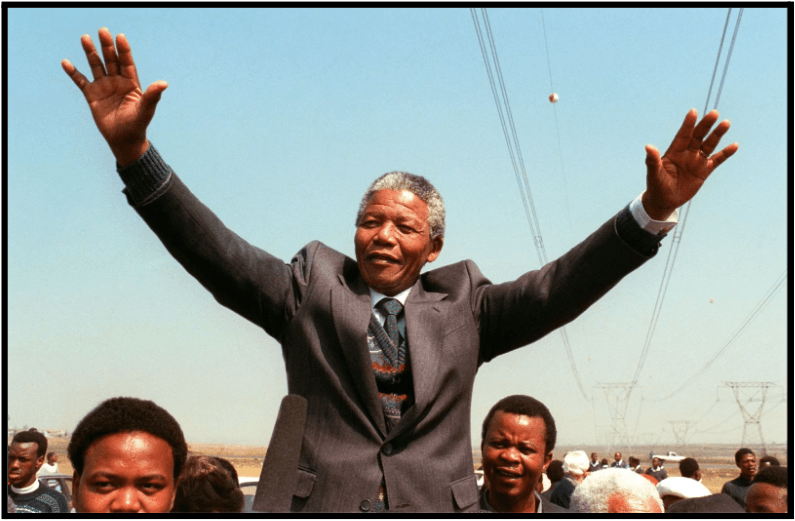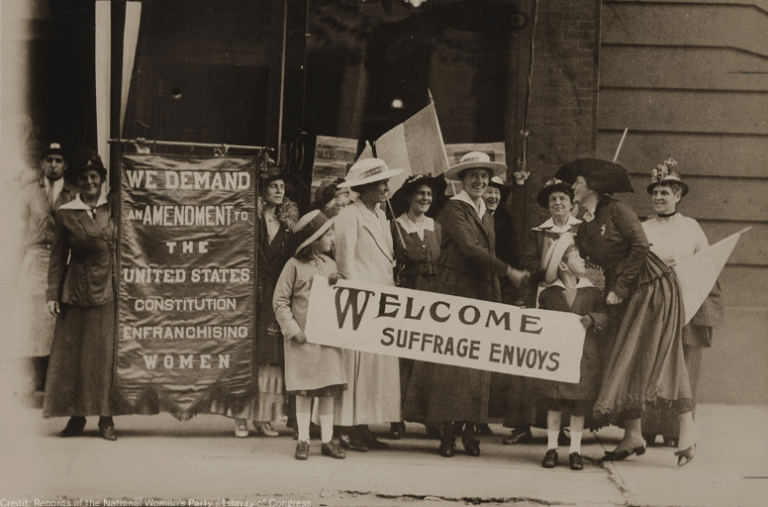Five templates to speak with clarity and eloquence. From casual conversations to keynote addresses.
Talking Big Ideas.
“Strive for complexity in thinking, simplicity when speaking.”
~ Edward de Bono
***
What we say matters.
Having quality content to share isn’t enough. We have to structure our messaging in a way that connects and resonates with our audience. This takes work. Our default is often to ramble, bury the lead, leave important details out, and focus on ourselves rather than our audiences.
Below are five useful templates to help you speak with clarity and eloquence. They’ve all been battle-tested by our clients – as well as many of the most influential and effective speakers in history.
***
I. The Problem Solver
A basic template to master

The Problem Solver is a quick and easy way to talk about your work. You can tailor it to highlight various projects or to target specific audiences. There are three parts:
- Clarify a problem you’re working on.
- Explain your solution.
- Give a concrete example to bring your solution to life.
Here’s how Matt Paprocki, president of the Illinois Policy Institute, has used this template to explain his organization in a conversational way:
- Problem: “You know how our friends and neighbors are moving out of Illinois because of our high taxes and low services?” [heads nod in agreement]
- Solution: “Well, what we do is work with elected officials to pass laws to make Illinois competitive, and to keep our loved ones here.”
- Example: “In fact, just last week, we helped preserve a $75 million tax credit scholarship program, by creating videos showing the impact of school choice, and now lawmakers are looking to expand the program.”
This can also apply to speeches. Listen to Winston Churchill deliver his iconic 1940 speech We Shall Fight on the Beaches:
How Churchill applied the Problem Solver:
- Problem: The looming threat of Nazi invasion.
- Solution: Resolve, unity, and determination to fight and defend Britain.
- Example: Driving home all the places where they will fight: beaches, landing grounds, fields, hills, streets, seas, oceans, and in the air.
*Dive Deeper: My article on The Problem Solver*
***
II. The Persuasive Narrative
An Elaboration of the Problem Solver
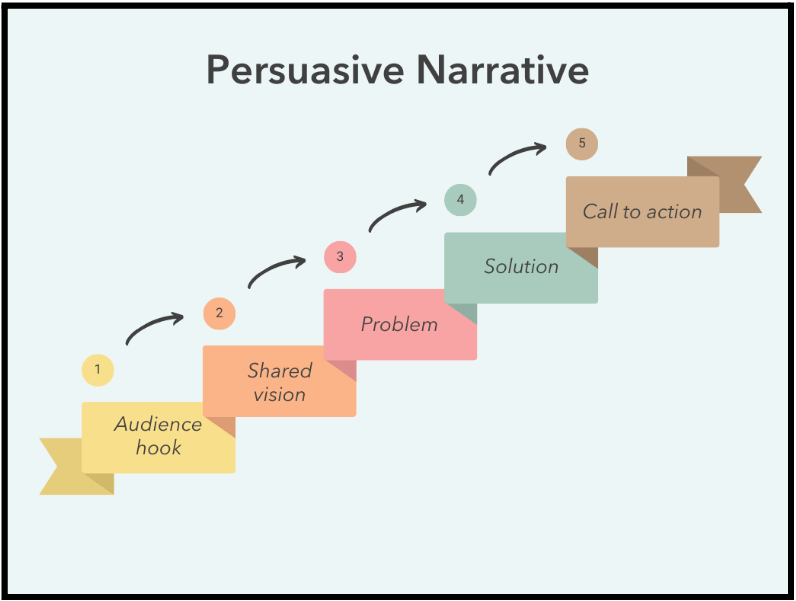
The Persuasive Narrative begins with an Audience Hook. Something that appeals to their interests or concerns. It then presents a Shared Vision, an enhanced future state we would all like to see.
The speaker then highlights a Problem that is keeping us from realizing the Shared Vision and offers a Solution to the Problem. Finally, it ends with a Call to Action.
Consider Nilofer Merchant’s TED Talk:
How Merchant applied the Persuasive Narrative:
- Audience Hook: “What you’re doing right now . . . is killing you.”
- Shared Vision: A world where we are more healthy, happy, and productive.
- Problem: Sitting is the smoking of our generation.
- Solution: Walking meetings.
- Call to Action: Walk more. Especially during meetings.
*Dive Deeper: Maryrose’s essay on The Persuasive Narrative*
***
III. The Linked Narrative
A classic tool for activists determined to make change happen
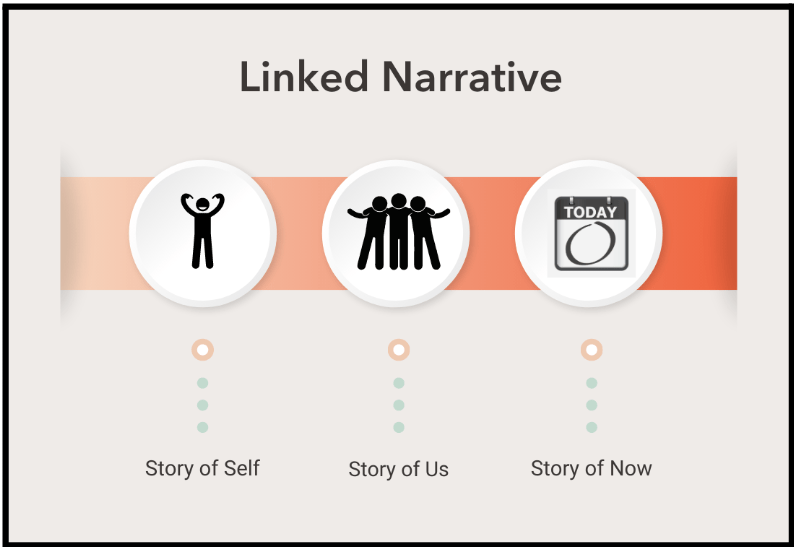
A Linked Narrative highlights shared values.
The purpose is to inspire an audience to action. The speaker doesn’t talk about values so much as helps the audience feel and experience the values – and then go out and fight for them.
- Story of Self: Bring to life one or more values by sharing specific moments from your past.
- Story of Us: Connect these values to your audience.
- Story of Now: Explain how we must act together to protect and advance the values. Paint a bright vision if we succeed, or a worse world if we fail to act.
Here’s Barack Obama delivering his iconic DNC speech in 2004:
How Obama applied the Linked Narrative:
- Story of Self: Obama emphasizes his uniquely American story, which spans continents and generations, and then says this:
“Through hard work and perseverance my father got a scholarship to study in a magical place: America, that shone as a beacon of freedom and opportunity to so many who had come before.”
- Story of Us: Obama connects his Story of Self to his audience:
“My story is part of the larger American story . . . in no other country on Earth is my story even possible . . . tonight we gather to affirm the greatness of our nation. . . . We are one people, all of us pledging allegiance to the stars and stripes, all of us defending the United States of America.”
- Story of Now: Obama urges his audience to vote in November. And that doing so will advance their shared values:
“America! Tonight, if you feel the same energy that I do, if you feel the same urgency that I do . . . if you feel the same hopefulness that I do — if we do what we must do, then I have no doubts . . . the people will rise up in November . . . and this country will reclaim its promise, and . . . a brighter day will come.”
*Dive Deeper: My essay on The Linked Narrative*
***
IV. The Hero’s Journey
Face your challenges and acquire wisdom to share.
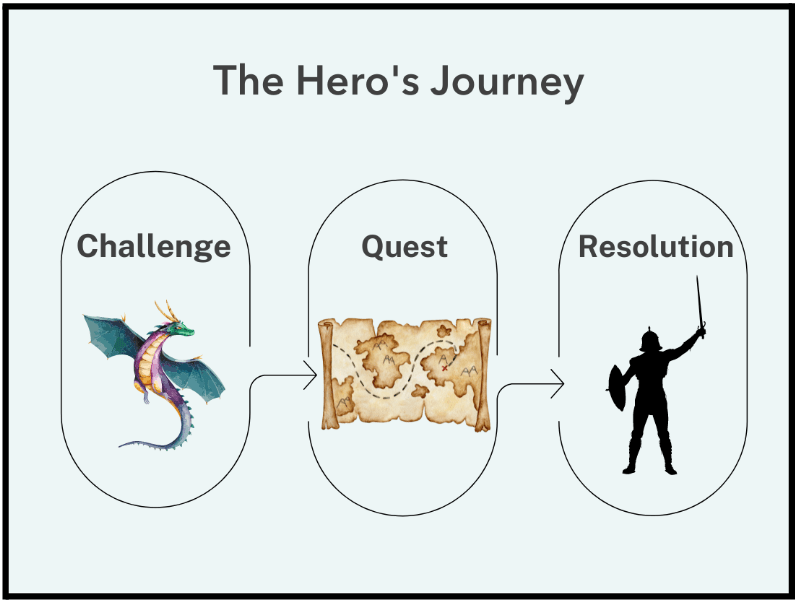
In the 1950s, the writer Joseph Campbell popularized the Hero’s Journey. His work was influential – George Lucas famously applied it to Star Wars and now the template is a staple in Hollywood.
While Campbell described the Hero’s Journey as a narrative with 17 different stages, the important thing for public speakers is the three distinct sections: Challenge, Quest, and Resolution.
- Challenge: Something dramatic pushes you out of your comfort zone.
- Quest: You embark on a journey filled with trials. You transform and grow as a result.
- Resolution: You overcome or transcend the obstacles in your path. You return home to share the wisdom you’ve learned.
Steve Jobs uses the Hero’s Journey three times in his Commencement Address to Stanford:
How Jobs applied the Hero’s Journey:
- Challenges: College dropout, fired from Apple, terrible cancer diagnosis.
- Quests: Explore new paths: follow curiosity, start new companies like NeXT and Pixar, deeply reflect on the meaning of life.
- Resolutions: Transform adversity into opportunity: Lead the Apple renaissance and embrace mortality to live with authenticity.
*Dive Deeper: Kurt Vonnegut’s funny & visual explanation*
***
V. The Front Load
For answering questions, and everyday conversations.
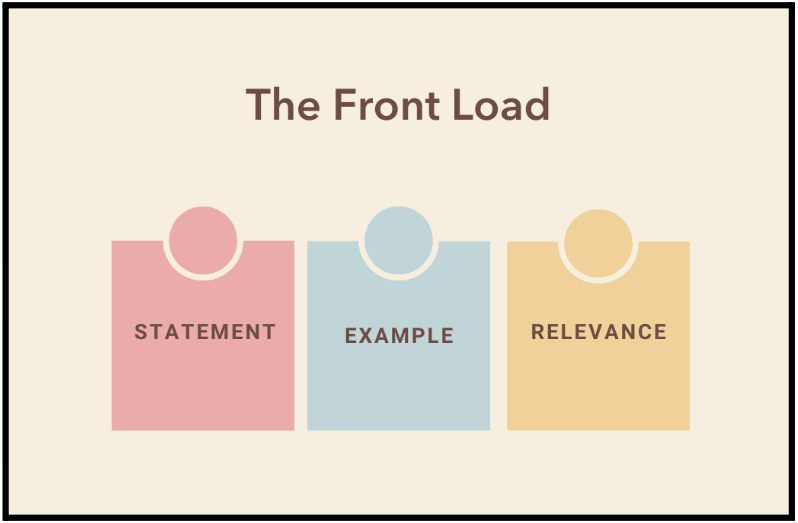
The Front Load is a game changer.
Most of our public speaking happens off the stage, where we tend to ramble our way through conversations and take too long to get to the point when answering questions. The Front Load is an antidote to this:
- Statement: Begin with a simple, clear, compelling statement.
- Example: Bring it to life in a concrete way.
- Relevance: Clarify why it matters for your audience.
You can apply this all the time, from work meetings and donor conversations to media interviews, testimony before Congress, court arguments, and everyday conversations.
Example Question: Why should I take the time to learn how to use the Front Load?
- Statement: Conversations may be the most important part of your communication with others.
- Example: I had a client tell me how she crushed her Q&A after a big talk. Several people came up afterward to ask about partnering on her project. She attributes her Q&A prep to the success she had in connecting with her audience and driving her project forward.
- Relevance: People will talk to you and ask questions. Your ability to converse well and answer questions effectively will determine your impact.
How Ruth Bader Ginsburg applied the Front Load:
- Statement: Change happens one step at a time.
- Example: In the legal fights for women’s rights, we didn’t win every case, but each victory, small or large, paved the way for the next.
- Relevance: Persistence and patience in the pursuit of justice often yield more lasting results than seeking sudden shifts.
*Dive Deeper: My article highlighting The Front Load*
***
I encourage you to test all five templates. Adjust and personalize. Apply what is useful and discard the rest.

